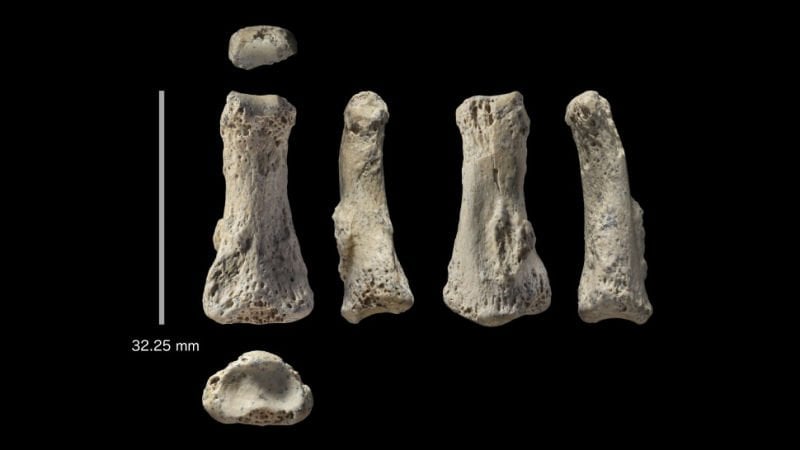Scientists are looking to understand the way humans migrated from Africa. They discovered an ancient human finger belonging to the anatomically modern human outside of Africa and the Levant. The fossil dates back to 90,000 years ago and it serves to shed light on older, traditional theories about early human migration.
Scientists believe that Homo sapiens lived and explored Saudi Arabia, which used to be wet and full of grass, much earlier than they’d originally thought. Originally, it was thought that humans left Africa in one wave. However, a new theory suggests that there were several migrations when humans moved out. The team published their findings in Nature Ecology and Evolution.
When he was returning from a lunch break on January 20, 2016, paleontologist Iyad Zalmout saw something that resembled a bone that was rounded up at both of its ends. The bone was partly sticking out of the ground at Al Wusta, an archaeological site in Saudi Arabia. He couldn’t immediately tell whose this bone was and from where it had come.
“[I scratched] my head for a few minutes as I tried to build a picture of who or what this bone belonged to,” Zalmout, who works at the Saudi Geological Survey, told Newsweek.
The team looked at the finger the same evening at a base camp in Tayma, determining that the bone belonged to an ancient human finger, belonging to Homo species or even a modern anatomical human.
After an in-depth analysis at different institutions around the globe, the team determined that the finger belongs to the modern human, but is also the oldest directly dated Homo sapiens fossil that has ever been discovered outside of Africa and the Levant. According to the researchers, the fossil is dated from 85,000 to 90,000 years old. That means that this finger was there 25,000 years before it was expected that this region was inhabited.
The Al Wusta site is located roughly 400 miles away from Levantine sites and supports an entirely different ecosystem as opposed to those from the Levant. According to two excavations at the site, there were different bones from animals that include hippos and also humans. According to the researchers, the climate was changing a lot at the site, shifting from dry to wet many times throughout history. Scientists believe that once humans found the wet area, they took advantage of it, enjoying the area which was good for animal hunting and there were a lot of long-lasting resources.
To determine the age of the bone, the team conducted uranium series dating. This method uses lasers to find out how old the fossils are that were discovered. After analyzing sediment and animal fossils, the team found that the dates match.
There are nearly 400 stone tools that researchers found at the site. The team’s findings suggest that a larger human population lived there, indicating that there were many mobile hunter-gatherers.
Research suggests they moved opportunistically and used numerous lakes and grasslands that were present there at the time. According to the team, it is believed that there were around 15,000 lakes in the Nefud desert in northern Saudi Arabia, that were reactivated as a result of monsoons.
After the discovery of the ancient human finger and other fossils at the site, scientists will work to improve genetic study and focus on sites that haven’t yet been explored as much, like Saudi Arabia and other spots where Homo sapiens traveled following migration from Africa.





